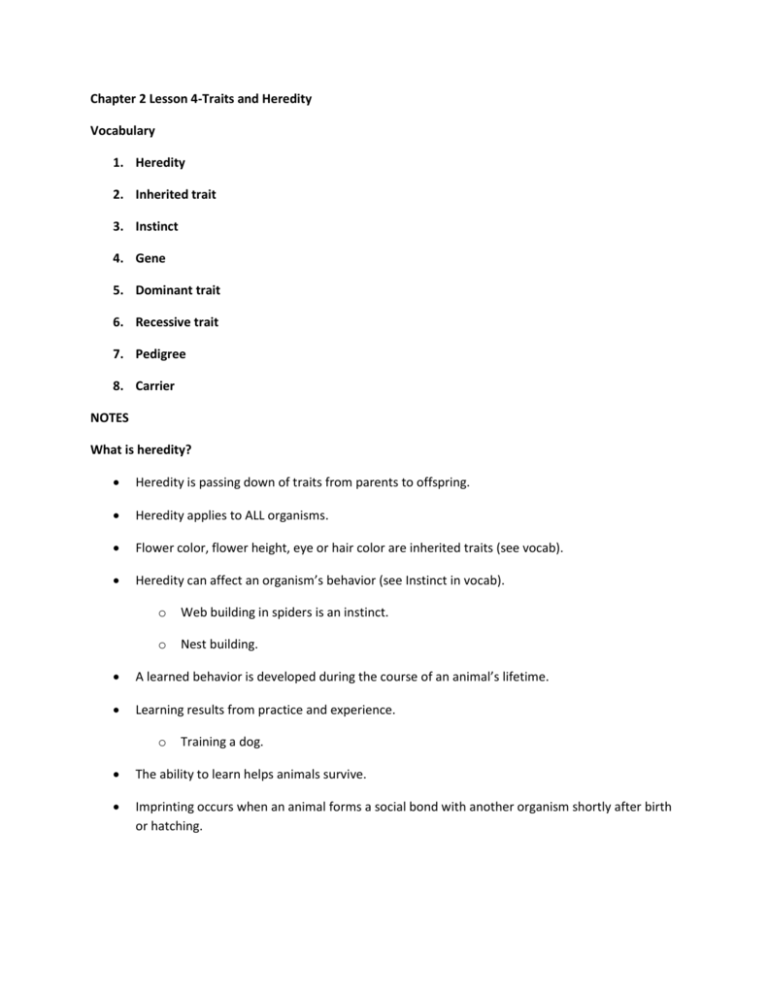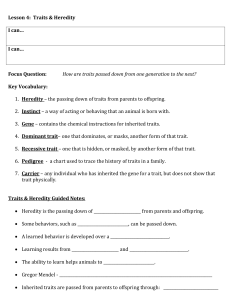Lesson 4 Traits and Heredity Notes
advertisement

Chapter 2 Lesson 4-Traits and Heredity Vocabulary 1. Heredity 2. Inherited trait 3. Instinct 4. Gene 5. Dominant trait 6. Recessive trait 7. Pedigree 8. Carrier NOTES What is heredity? Heredity is passing down of traits from parents to offspring. Heredity applies to ALL organisms. Flower color, flower height, eye or hair color are inherited traits (see vocab). Heredity can affect an organism’s behavior (see Instinct in vocab). o Web building in spiders is an instinct. o Nest building. A learned behavior is developed during the course of an animal’s lifetime. Learning results from practice and experience. o Training a dog. The ability to learn helps animals survive. Imprinting occurs when an animal forms a social bond with another organism shortly after birth or hatching. How are traits inherited? Gregor Mendel was an Austrian monk who studied and discovered the basic principles of heredity. In 1856, Mendel began experimenting with garden pea plants. He crossed plants that had different traits and observed how those traits were passed on. Mendel conducted experiments for 7 years. Mendel determined that inherited traits are passed from parents to offspring during reproduction. He believed that each inherited trait is controlled by 2 factors. o The offspring receive 1 of these factors from each parent. Genes (see vocab) are stored on cell structures called chromosomes, which are found in the nucleus of the cell. Mendel concluded that for every trait there is a dominant and recessive form. Each form of the trait can be represented by letters. o A capital letter (P) is used for the dominant form of the trait. o A lowercase letter (p) is used for the recessive form of the trait. Mendel’s findings are important because they apply to all organisms. Dominant traits tend to be expressed more frequently than recessive traits. Recessive traits are masked by the dominant forms. How do we trace inherited traits? Some traits controlled by genes are easy to see, others you cannot see. A pedigree (see vocab) is used to study heredity patterns. Parents and offspring are shown in a pedigree. Horizontal lines connect parents; Vertical lines connect parent to offspring. Males are represented by boxes; Females are circles. Dominant traits are shaded; Recessive traits are not shaded.








